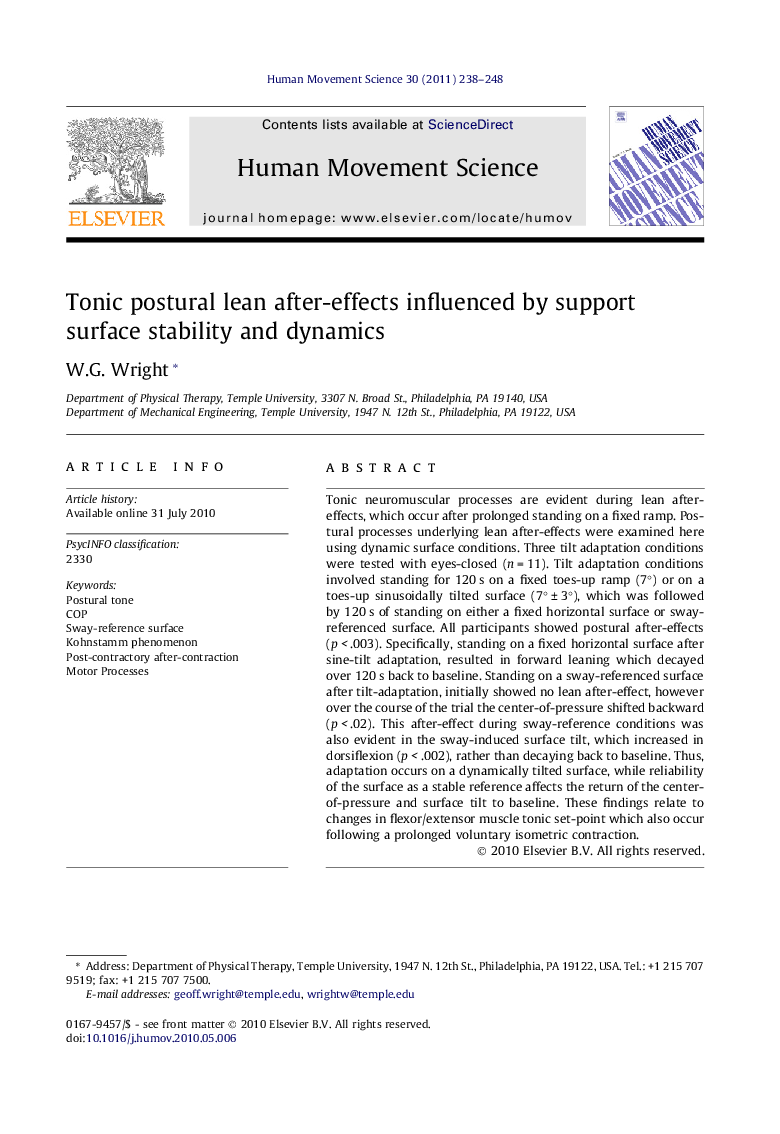| Article ID | Journal | Published Year | Pages | File Type |
|---|---|---|---|---|
| 928652 | Human Movement Science | 2011 | 11 Pages |
Tonic neuromuscular processes are evident during lean after-effects, which occur after prolonged standing on a fixed ramp. Postural processes underlying lean after-effects were examined here using dynamic surface conditions. Three tilt adaptation conditions were tested with eyes-closed (n = 11). Tilt adaptation conditions involved standing for 120 s on a fixed toes-up ramp (7°) or on a toes-up sinusoidally tilted surface (7° ± 3°), which was followed by 120 s of standing on either a fixed horizontal surface or sway-referenced surface. All participants showed postural after-effects (p < .003). Specifically, standing on a fixed horizontal surface after sine-tilt adaptation, resulted in forward leaning which decayed over 120 s back to baseline. Standing on a sway-referenced surface after tilt-adaptation, initially showed no lean after-effect, however over the course of the trial the center-of-pressure shifted backward (p < .02). This after-effect during sway-reference conditions was also evident in the sway-induced surface tilt, which increased in dorsiflexion (p < .002), rather than decaying back to baseline. Thus, adaptation occurs on a dynamically tilted surface, while reliability of the surface as a stable reference affects the return of the center-of-pressure and surface tilt to baseline. These findings relate to changes in flexor/extensor muscle tonic set-point which also occur following a prolonged voluntary isometric contraction.
